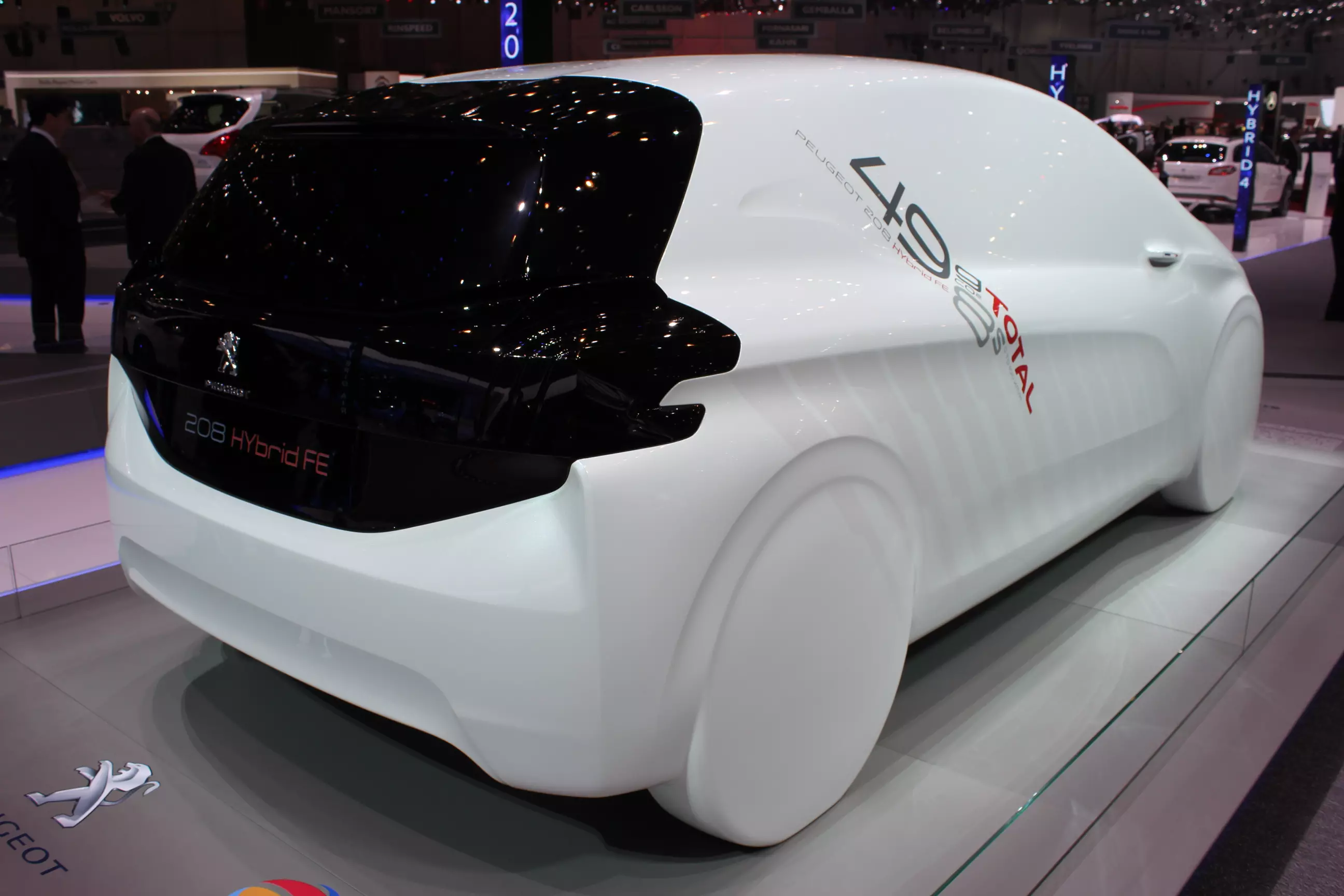After introducing 2 hybrid models, the Gallic brand repeats the formula. Meet the new Peugeot 208 Hybrid FE.
The Peugeot 208 Hybrid FE starts from the base of the "normal" 208 where some changes have been made. It all starts with the bodywork, which has been improved in order to reduce aerodynamic resistance, going through a tight diet, which allowed for a reduction in total weight, and a hybrid propulsion system.
According to the brand, the need to conceive a project like this came from the objective of reducing consumption of the less powerful version of the 208 range, which comes equipped with the 1.0 VTI block with 68 horsepower, but at the same time giving it benefits close to colossal 208 GTi.
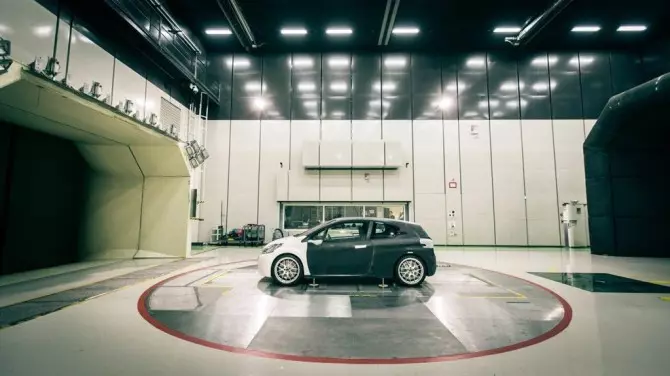
The estimated consumption is a measured 2.1 liters per 100km and for the little that is still known in relation to performance, the acceleration from 0 to 100km/h is accomplished in just 8 seconds. The aerodynamic coefficient of the bodywork has a very interesting value, a cx of just 0.25. A very good value considering that currently the most efficient car from an aerodynamic point of view is the Mercedes Class A (cx. of 0.23).
From the prototype images we can see the work carried out on the bodywork, taking into account the «normal» 208. The front grille has smaller air intakes, as well as the slightly different design of the bumper. Another obvious detail is the absence of rear-view mirrors and that in their place there are cameras.
The underbody has a flat coating and has an aerodynamic puller in the rear section, a section that is 40mm narrower compared to the current 208. Wheel hubs have new bearings and a special grease to reduce friction. The wheels were also designed to reduce rolling resistance and feature a prominent size for the small 208, are 19 inches and come equipped with 145/65R19 low-friction tires.
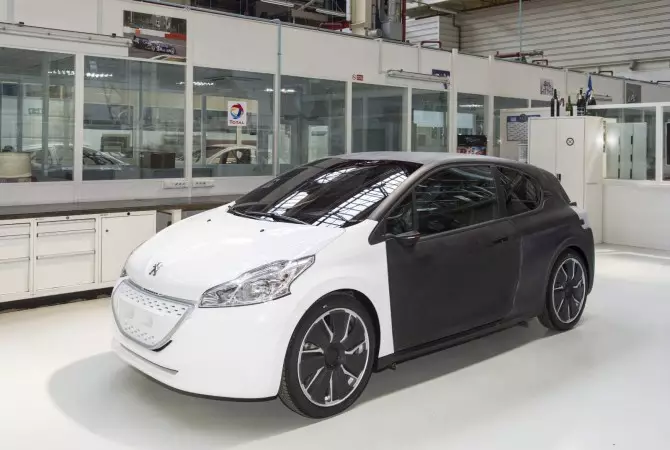
As we have already touched on the Peugeot 208 Hybrid FE went on a diet. It now weighs 20% less when compared to the 208 1.0 with the lowest equipment level. This diet was achieved in particular, with the replacement of some body panels with carbon fiber, the side windows remain the same as those of the production 208 but the front windshield and rear window are in polycarbonate.
The suspension underwent major changes and the «McPherson» layout at the front gave way to a blade layout with a special support structure for the lower arms made of fiberglass, allowing the elimination of springs, stabilizer bars and upper arms. , developed in partnership with Hutchinson. In this chapter alone, Peugeot managed to save another 20kg.
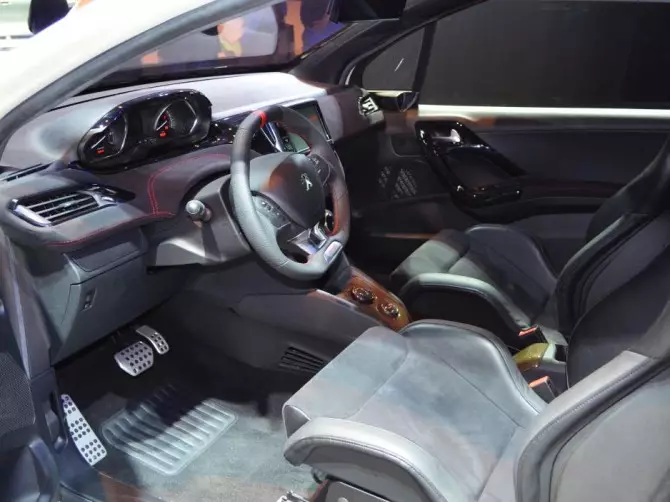
Where Peugeot also saved weight was in the direction. Electric steering gave way to manually assisted steering. Thanks to the reduced width of the tires, turning the steering wheel even when stationary is a simple task.
The other radical change was the elimination of the servo brake, according to Peugeot, due to the 208 Hybrid FE being lighter and counting on the help of the electric motor that helps in the process of immobilizing the car when braking, as it reverses during deceleration or braking. its functioning and becomes a generator.
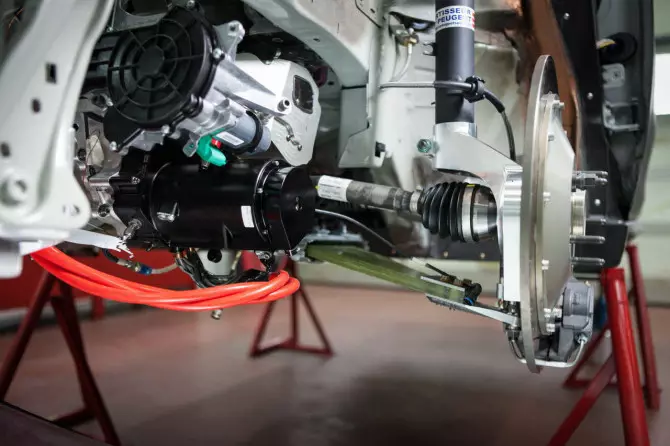
Mechanically, the engine that equips this Peugeot 208 Hybrid FE is the 1.0 three-cylinder VTI of the production 208, but through changes in the diameter and stroke of the cylinders the displacement increased to 1.23 liters. The compression ratio was also revised from 11:1 to 16:1, which quickly posed the problem of “auto-knocking” because it was so high, but which Peugeot compensated by introducing larger valves in order to reduce the amount of glowing particles inside the combustion chambers.
The exhaust manifold has a different design in order to optimize the circulation of exhaust gases. The cylinder head has also been reworked, with new channels for circulating water to cool the engine more efficiently. Another great novelty was the treatment of the steel crankshaft, through the nitration process in order to make it harder. The connecting rods are made of titanium and the pistons are made of aluminum and copper alloy.
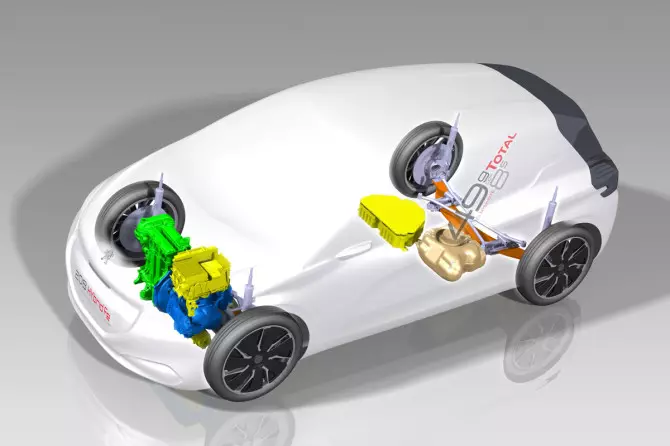
In terms of alternative energy, the electric motor weighs a record 7kg and delivers 41 horsepower, which has the ability to operate in 100% electric mode to move the 208, but also acts as a wheel brake and current generator for the batteries, batteries that are placed close to the fuel tank, have a capacity of 0.56KWh, weigh 25kg and can only be charged by the electric motor, ie the Peugeot 208 Hybrid FE does not have a “plug-in” function for external charging.
A very interesting proposal by Peugeot, which seems to have been designed taking into account the fiscal climate of our country. Clearly the concept of feeding a “donkey with sponge” does not apply here as the Peugeot 208 Hybrid FE promises consumption not of lion, but of cat.
